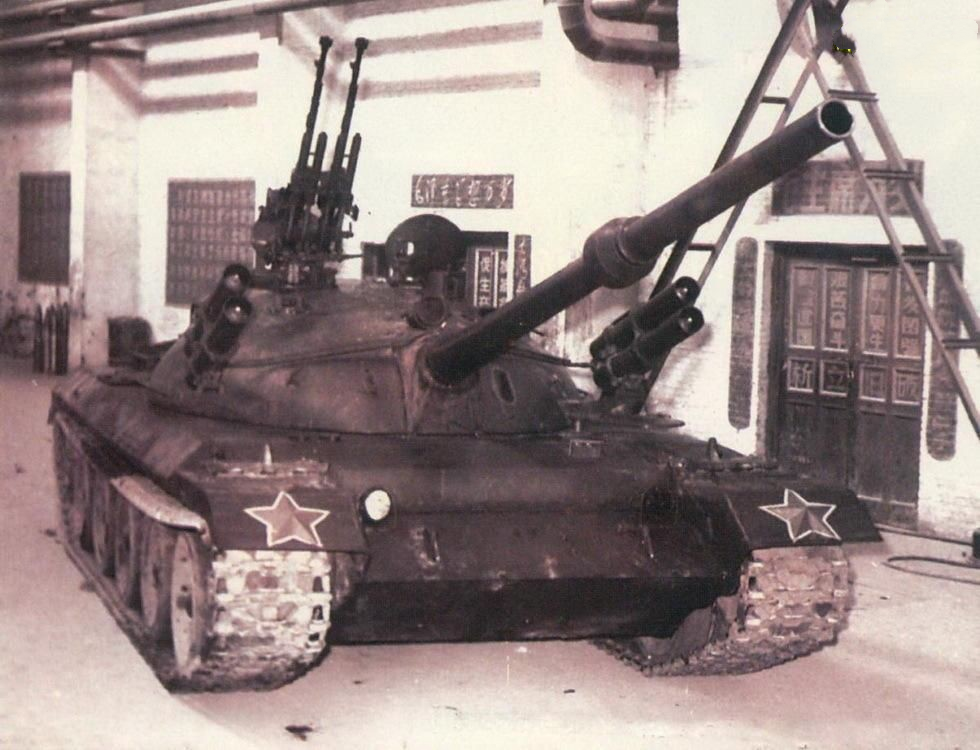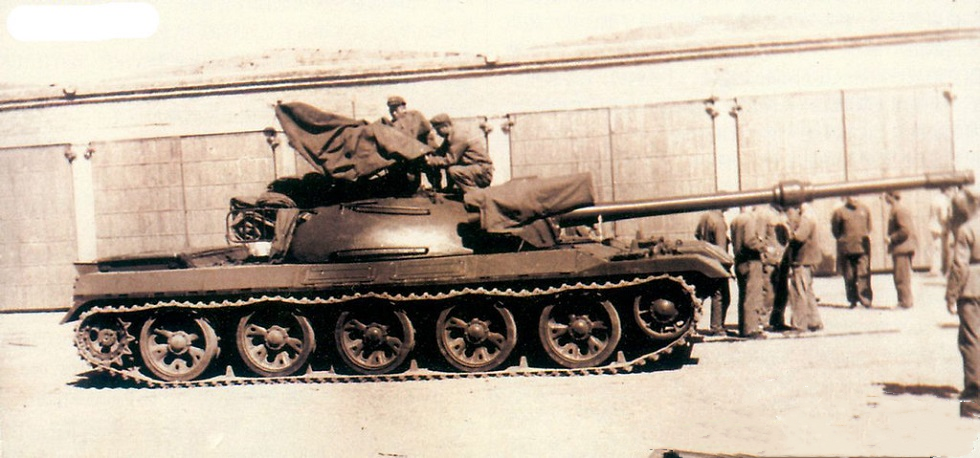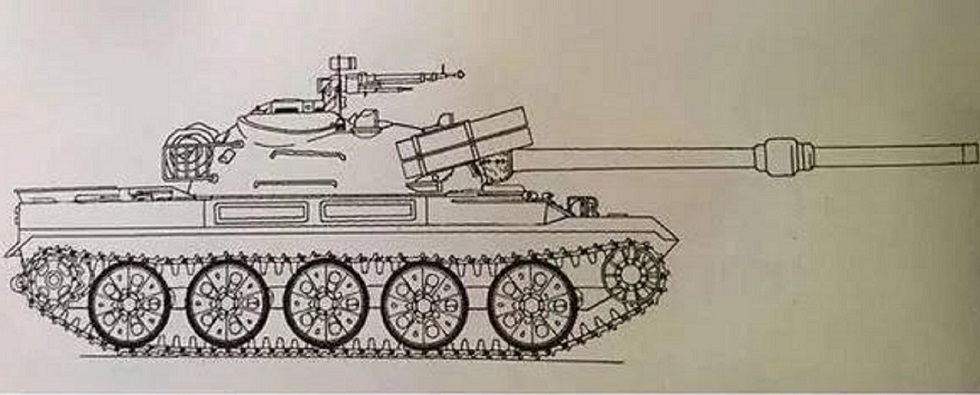- Yes
- No
WZ-122A (Triple Hydraulic) is a prototype tank developed by China that integrates fluid power transmission+a hydraulic control system+ and a hydraulic-pneumatic suspension.

The WZ-122A was a technological testbed vehicle initiated by China in April 1967 to bridge the gap with advanced Soviet T-64, American M60, and German Leopard 1 tanks. Its core innovation lay in the pioneering integration of a hydrodynamic transmission + hydraulic control system + hydropneumatic suspension—collectively termed the “Triple Hydraulic System”—aimed at achieving leaps in firepower and mobility.
Spoiler
The 1969 Zhenbao Island conflict delivered an unexpected shock to China, exposing the nation’s lack of effective countermeasures against Soviet T-62 tanks. The Type 59 and Type 69 medium tanks remained technologically rooted in the first-generation postwar era. Under this strategic pressure, China initiated the development of a more advanced tank model. Discussions on technical specifications began in December 1969, culminating in the formal launch of the WZ-122 medium tank project on March 18, 1970.
The first prototype incorporated cutting-edge systems for its time: hydraulic transmission, hydraulic control, and hydropneumatic suspension—collectively termed the “Triple-Hydraulic” prototype . Its design envisioned a 515 kW (700 hp) engine, 120 mm smoothbore gun, low-light night vision targeting system, composite armor, and NBC protection. These features aimed to enhance firepower and mobility to rival the Soviet T-64 and potential successors, positioning China to compete with global advanced tank technologies.
On September 25, 1970, the first “Triple-Hydraulic” prototype was completed. However, due to technical immaturity in the hydraulic systems, the project stalled. Confronted with these challenges, the Central Military Commission recognized the impracticality of the original tactical requirements and decisively terminated the “Triple-Hydraulic” initiative. Efforts shifted toward developing a “Triple-Mechanical” prototype using mature technologies: mechanical transmission, torsion bar suspension, and manual controls. Consequently, the “Triple-Hydraulic” prototype was retired after only brief demonstrations.


The WZ-122A Medium Tank retains the low-profile turret and streamlined hull design typical of Chinese tanks. The crew consists of four members: driver, loader, gunner, and commander.
The specific layout is as follows:
Front Section (Driver’s Compartment)The driver’s seat is positioned on the left side of the hull front, accessed via a hatch in the glacis plate.
Middle Section (Combat Compartment) Main armament is a 120mm smoothbore tank gun paired with a coaxial 7.62mm machine gun and twin roof-mounted 12.7mm anti-aircraft machine gun.
Turret Arrangement: The cast steel turret accommodates three crew members:
Loader: Positioned on the right side of the main gun, responsible for ammunition handling.
Commander: Located on the left side of the gun, with a cupola providing 360° visibility.
Gunner: Situated front-left below the commander, operating the main gun and fire control systems.
Ammunition Racks: Arranged on the right side and front-right of the turret, storing up to 40 rounds of 120mm ammunition.
Rear Section (Power Compartment)Engine: Features a transversely-mounted compact diesel engine
Engine: Domestic V-type water-cooled diesel engine, rated power approximately 515 kW (690 hp)。
Transmission System:Hydraulic mechanical transmission: Two-degree-of-freedom planetary gearbox with 3 forward gears + 1 reverse gear, paired with a wet-type two-stage planetary steering mechanism to achieve stepless speed change and precise steering.operational ease compared to traditional mechanical transmissions.
Combat weight: 37.5 tons
Crew: 4 personnel
Dimensions:9.52 meters (L) × 3.28 meters (W) × 2.25 meters (H)
Hull Armor: 100mm (front) / 80mm (sides) / 45mm (rear)
Turret Armor: 200mm (front) / 165mm (sides) / 65mm (rear)
Max speed: 55 km/h (road), 45 km/h (off-road)
Max range: 400 km
Armament
-
Primary weapon: 120mm smoothbore tank gun (-6° to +18° elevation) firing APFSDS (muzzle velocity 1,650 m/s)
- Rate of fire: 3-4 rpm (manual loading)
-
Anti-tank missiles: Infrared-guided (HJ-4)4rounds
Caliber: 120mm
Weight: 15kg
Length: 1,156mm
Range: 3,000m
Flight speed: 200–250 m/s
Dynamic penetration: 150–180mm @65°
Static penetration: 800mm -
Secondary weapons:
- twin 12.7mm AA MG
- 7.62mm coaxial MG
-
Ammunition capacity:
- 120mm rounds: 40
- 12.7mm rounds: 500 (for twin MG)
- 7.62mm rounds: 3,000
- AT missiles: 4
Adjustable Hydropneumatic Suspension
Utilizing hydraulic cylinders and nitrogen accumulators for vehicle attitude control, theoretically enabling:
- Vehicle Height Adjustment:
- ±160 mm vertical travel range
- Lowering profile for concealment or negotiating low-clearance obstacles
- Pitch and Roll Compensation:
- Extend the gun’s firing arc
- Maintain stabilized firing capability on sloped terrain
- Automatic Track Tensioning:
- Hydraulic system self-adjusts track tension
- Reduces crew maintenance workload
Fire Control System
- Advanced automatic ballistic table FCS
- Triple-function sight (day sight/low-light night vision/laser rangefinder)
- New observation/fire control equipment
- Ballistic computer
- Two-axis stabilizers
source
中国探索试验性质的中型坦克–122中型坦克
танк WZ-122-1
The prototype of China during the Cold War period
122型戦車(WZ-122)
Vehicles of the PLA